Angel of Florence: who was the mysterious Venus of Sandro Botticelli
Categories: Culture
By Pictolic https://pictolic.com/article/angel-of-florence-who-was-the-mysterious-venus-of-sandro-botticelli.htmlThe sources of inspiration for the creators of the Middle Ages and the Renaissance were often unattainable Beautiful Ladies, whose platonic love and worship gave birth to masterpieces of world art. The Florentine Simonetta Vespucci became for the greatest artist of the Renaissance, Sandro Botticelli, the same deity as Beatrice for Dante or Laura for Petrarch. She did not notice the modest artist and did not suspect that she was the ideal of beauty for him.
The girl never found out thanks to whom her image remained in the centuries, she passed away at the age of 23.
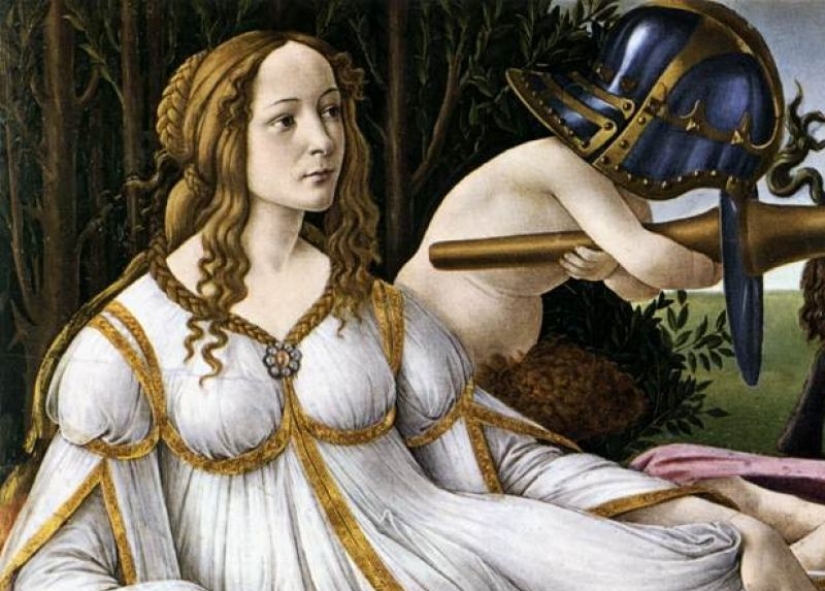
Not much is known about it. Simonetta was married to Marco Vespucci, who was related to the famous Florentine navigator Amerigo Vespucci. Simonetta's husband was a friend of Giuliano de ' Medici, the co-ruler of Florence, so after the wedding, the young people moved to this city. But the marriage of Simonetta and Marco was not happy.

Sandro Botticelli. Self-portrait
After their move to Florence, the young beauty could not be ignored, many noble men of the city sought her favor, among her admirers was the Florentine ruler Lorenzo de ' Medici. But her heart was given to his younger brother Giuliano. He was admired by the entire female population of the city, from noble ladies to city women — he was handsome, stately, strong and agile.
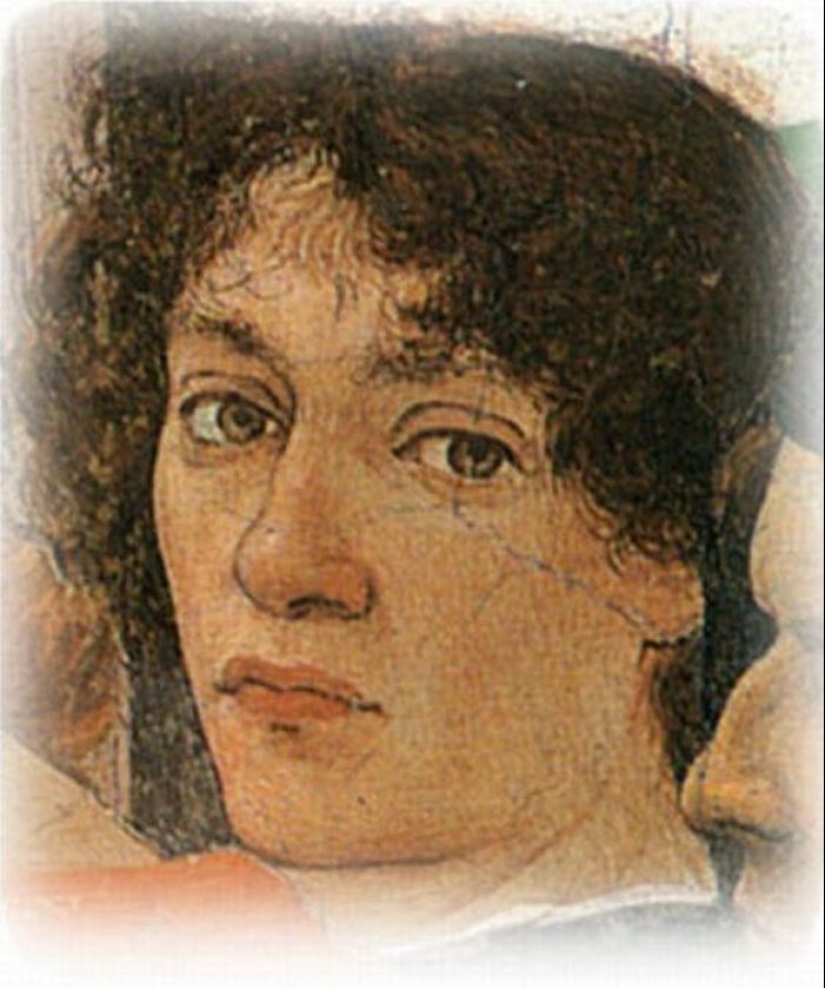
Filippino Lippi. Portrait of S. Botticelli
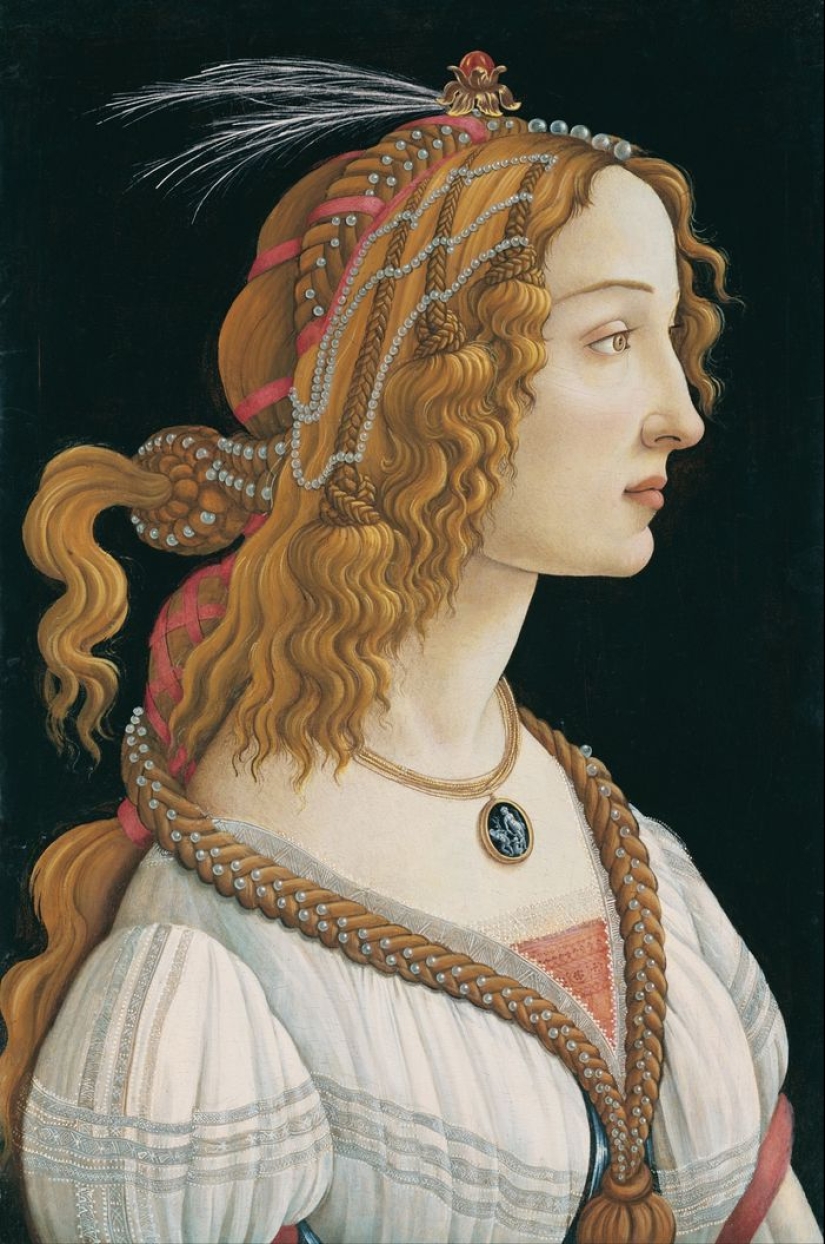
Sandro Botticelli. "Portrait of a young Woman "("Portrait of Simonetta Vespucci"), 1475-80
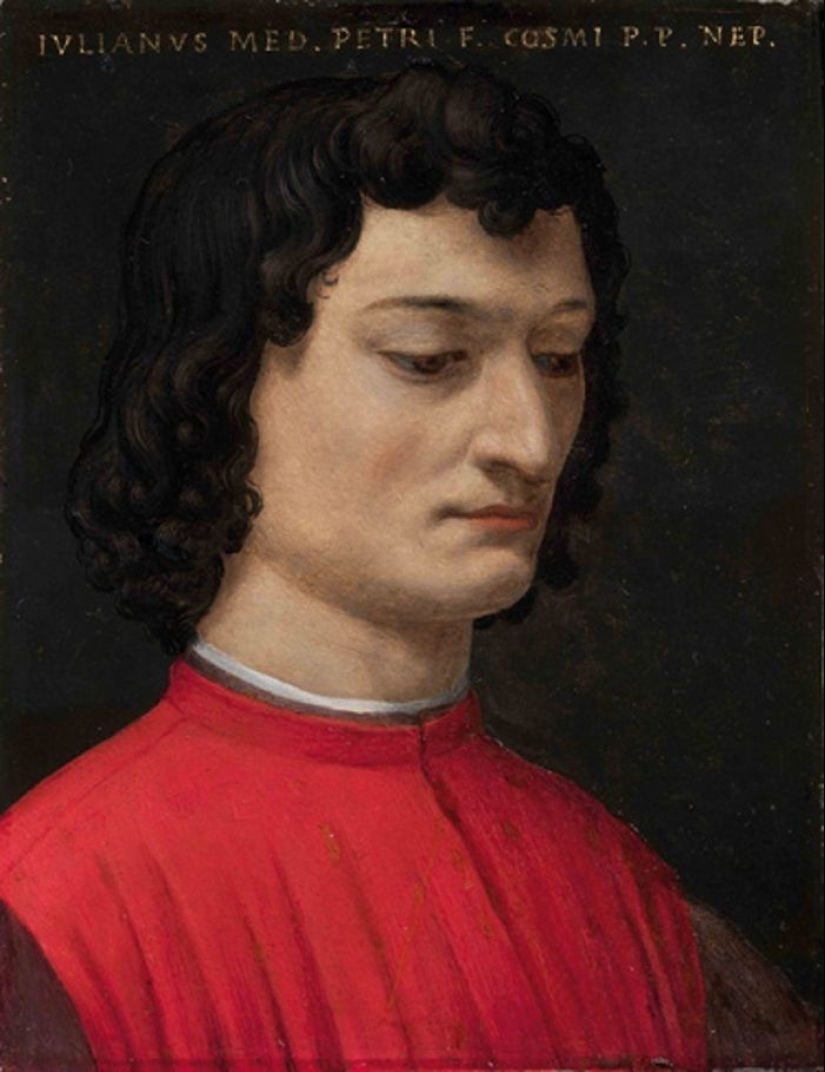
Agnolo Bronzino. Portrait of Giuliano de ' Medici
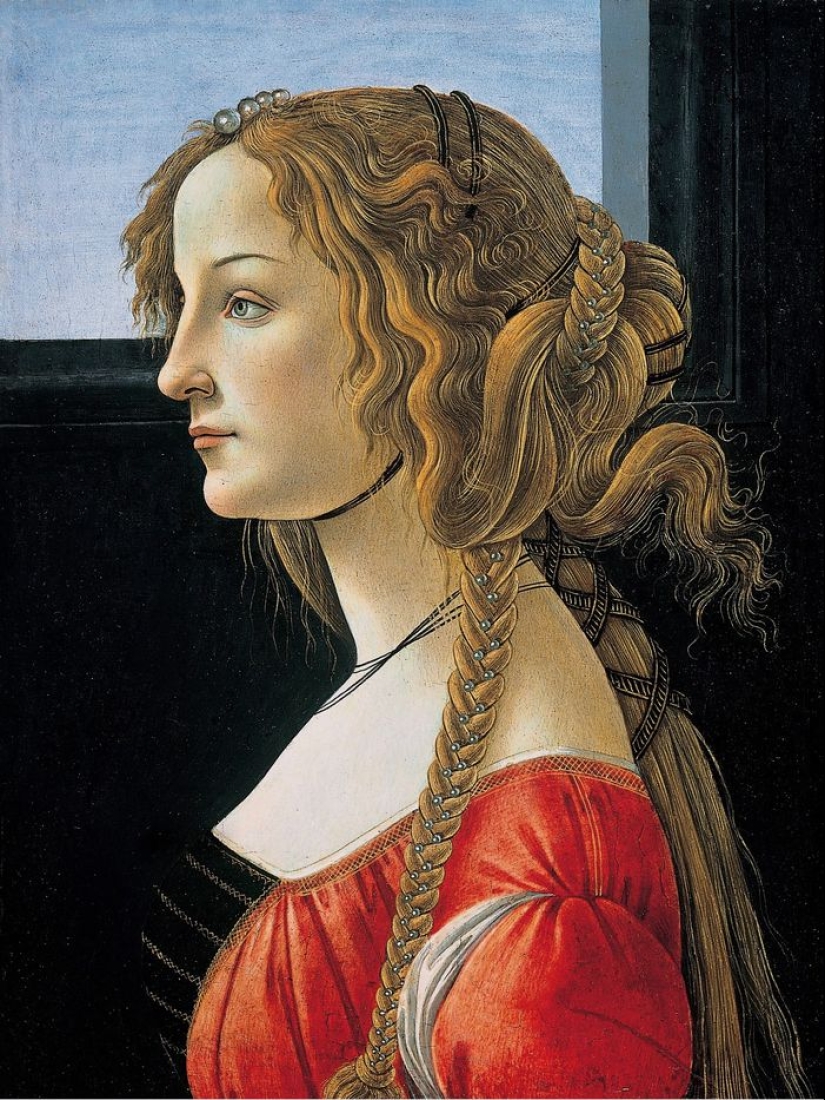
Sandro Botticelli. Simonetta Vespucci (presumably), 1475

It is believed that this work by Piero di Cosimo depicts Simonetta Vespucci in the image of Cleopatra decades after her death.
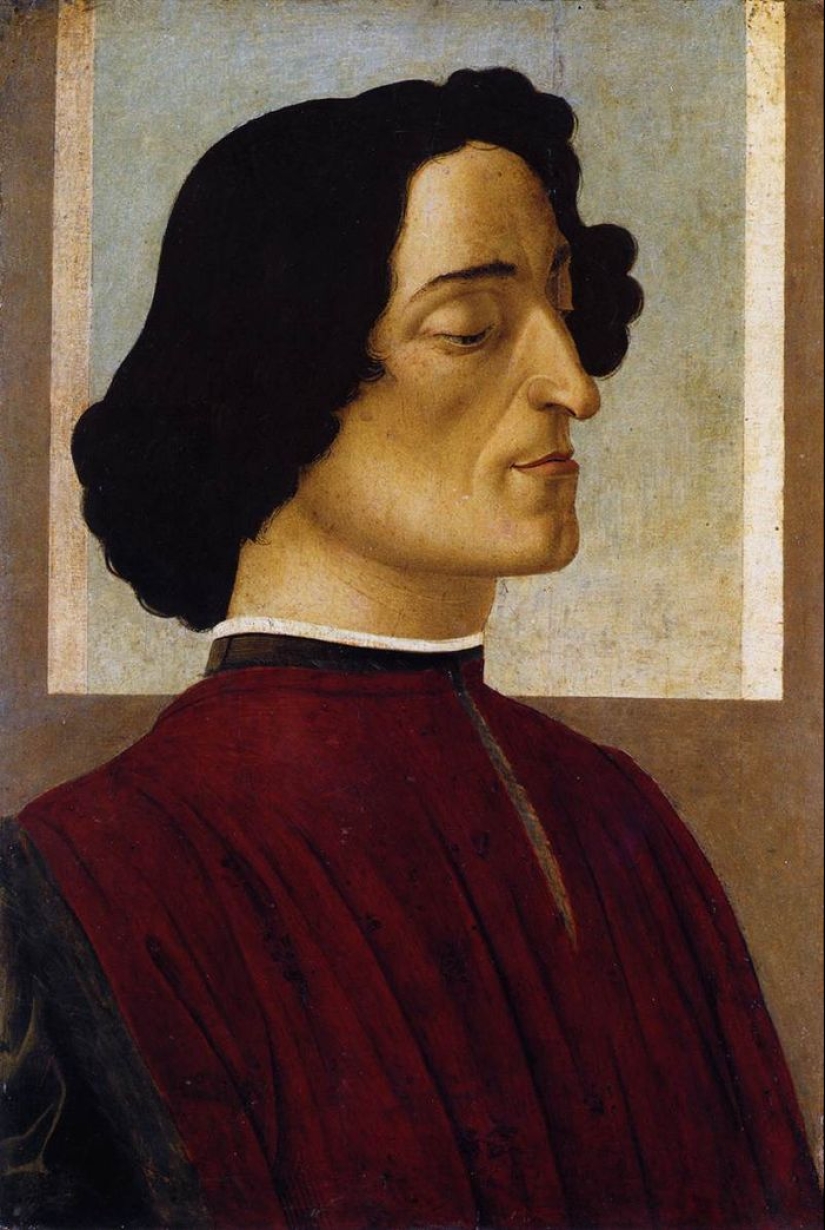
Sandro Botticelli. Portrait of Giuliano de ' Medici, 1476
In Florence, Giuliano de ' Medici was loved. He was called the Prince of Youth. He showed no interest in state affairs, but willingly took part in tournaments and balls. Simonetta was considered the first beauty of Florence, called her "Incomparable", poets dedicated poems to her, artists painted her portraits.
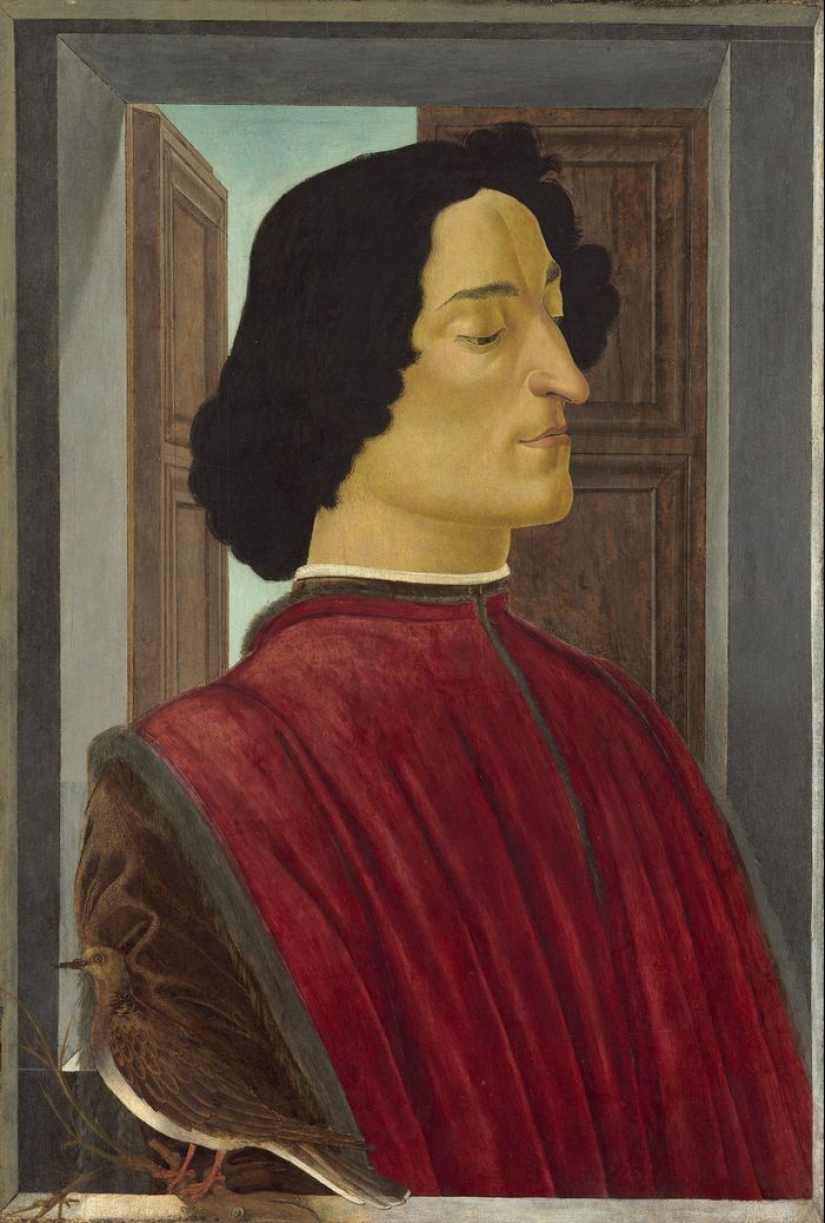
Sandro Botticelli. Portrait of Giuliano de ' Medici, 1478
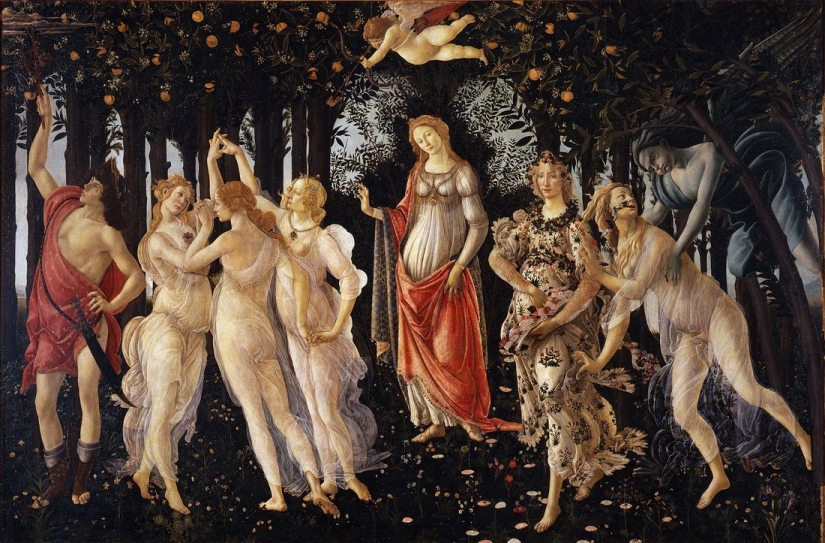
Sandro Botticelli. "Spring" (Primavera), 1482
Some researchers claim that Simonetta became Giuliano's lover, some are sure that their love remained platonic. There is no doubt that on January 28, 1475, Giuliano took part in the tournament and after his victory proclaimed the lady of his heart — Simonetta — the queen of the tournament. Botticelli participated in the design of this action, depicting Giuliano Simonetta on the personal banner in the image of Minerva in a white dress, with the head of the Gorgon Medusa in his hands. Unfortunately, this standard has not been preserved.

Sandro Botticelli. "The Birth of Venus", 1485
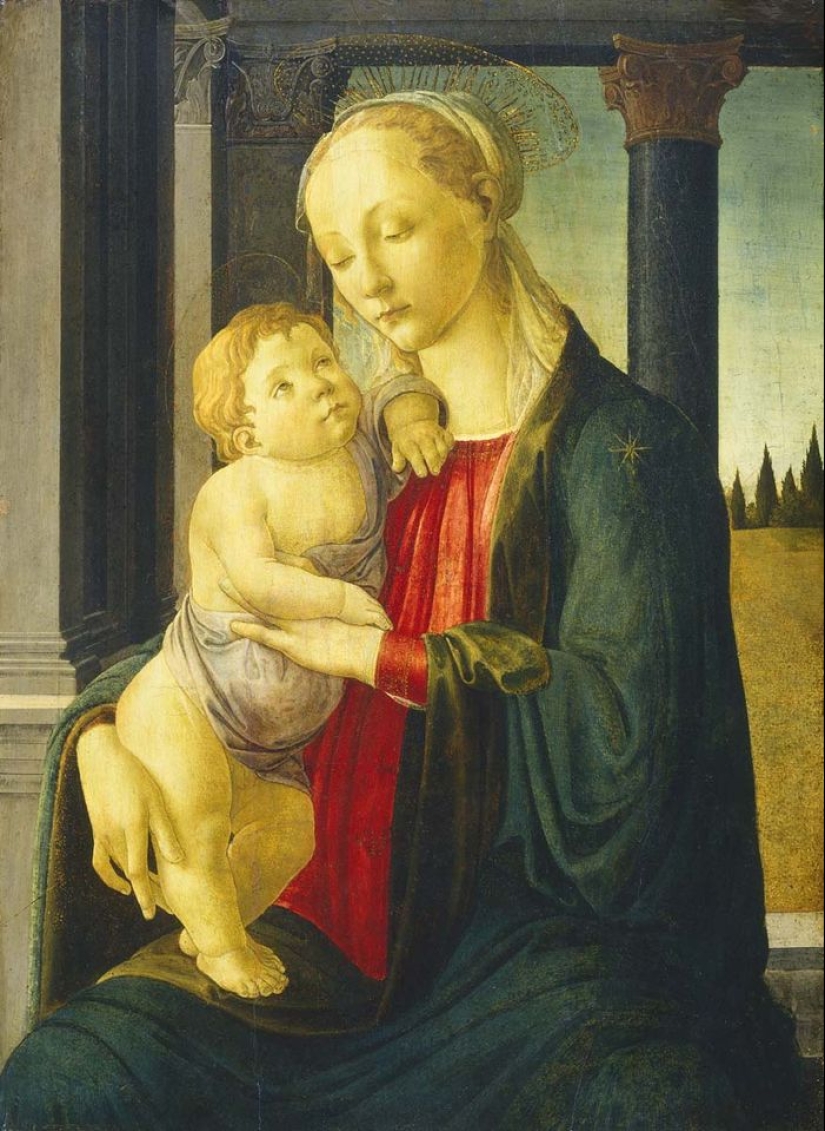
Sandro Botticelli. "Madonna and Child", 1470
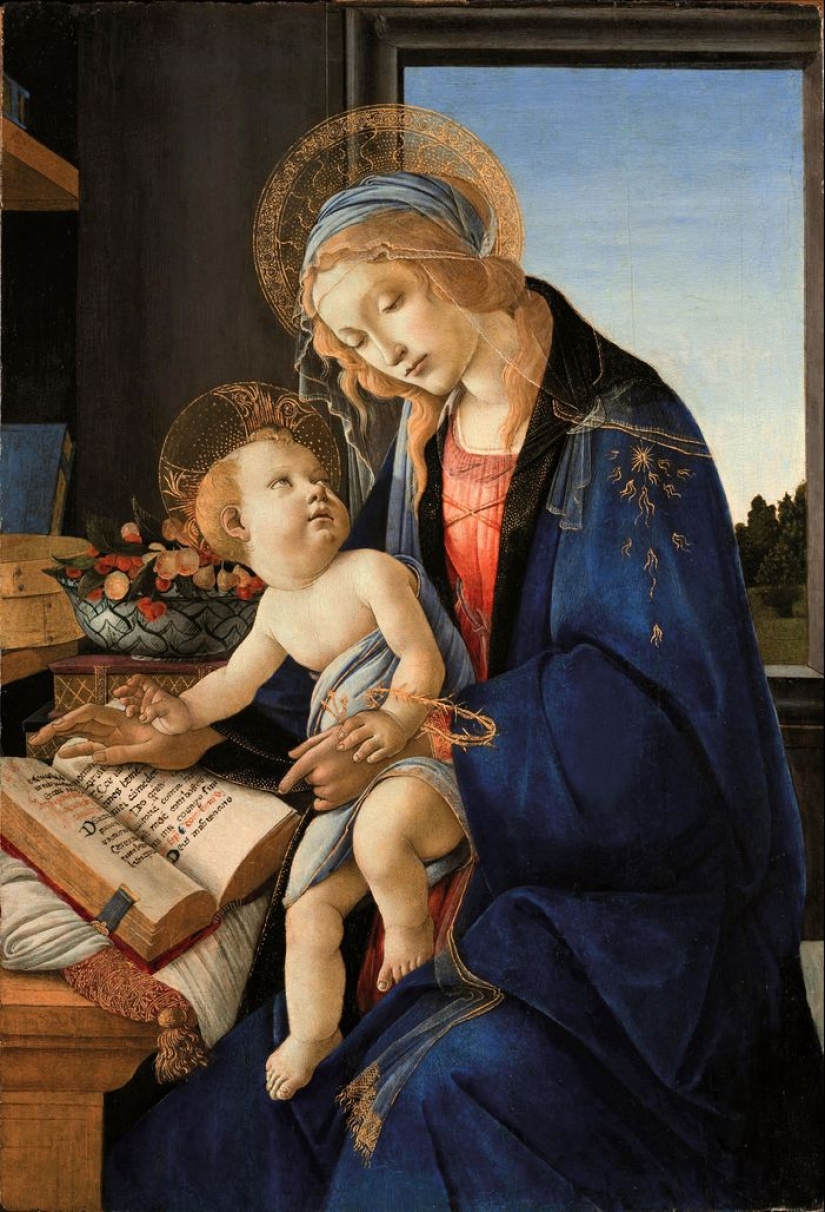
Sandro Botticelli. "Madonna with a book", 1483
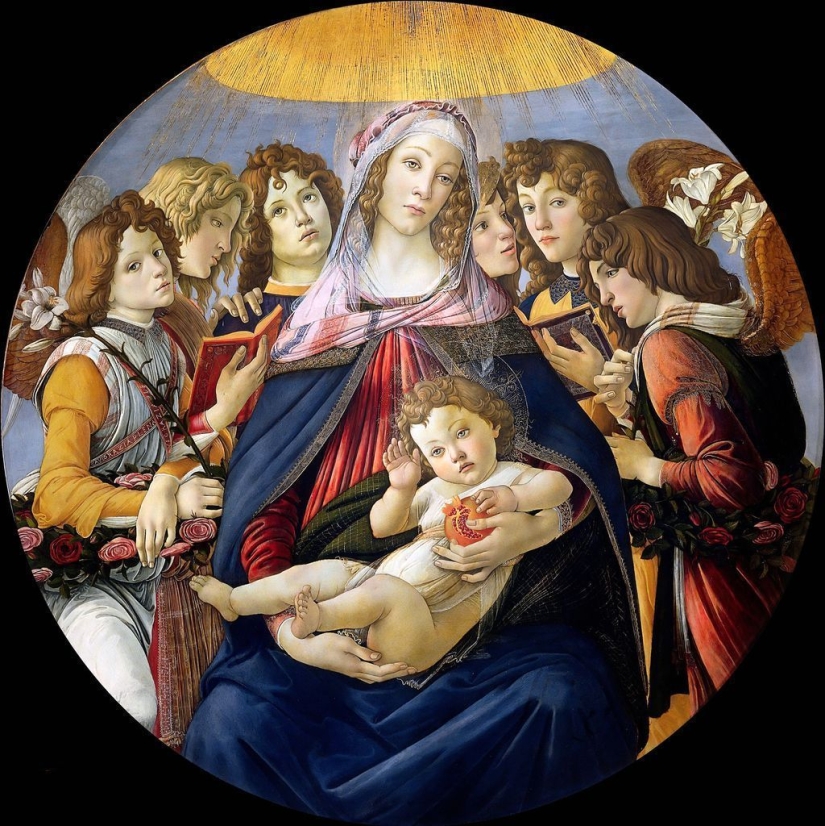
Sandro Botticelli. "Madonna with pomegranate", 1487
The beautiful Simonetta died at the age of 23 from consumption (according to another version - from poison). The whole of Florence mourned her death — they mourned the passing of a Beautiful Lady and the completion of the ideal love of Giuliano and Simonetta. Two years after the death of his beloved, on the same day — April 26 — Giuliano de ' Medici also died at the hands of the conspirators. The death of the young lovers seemed mystical to the Florentines, this story was remembered for a long time.
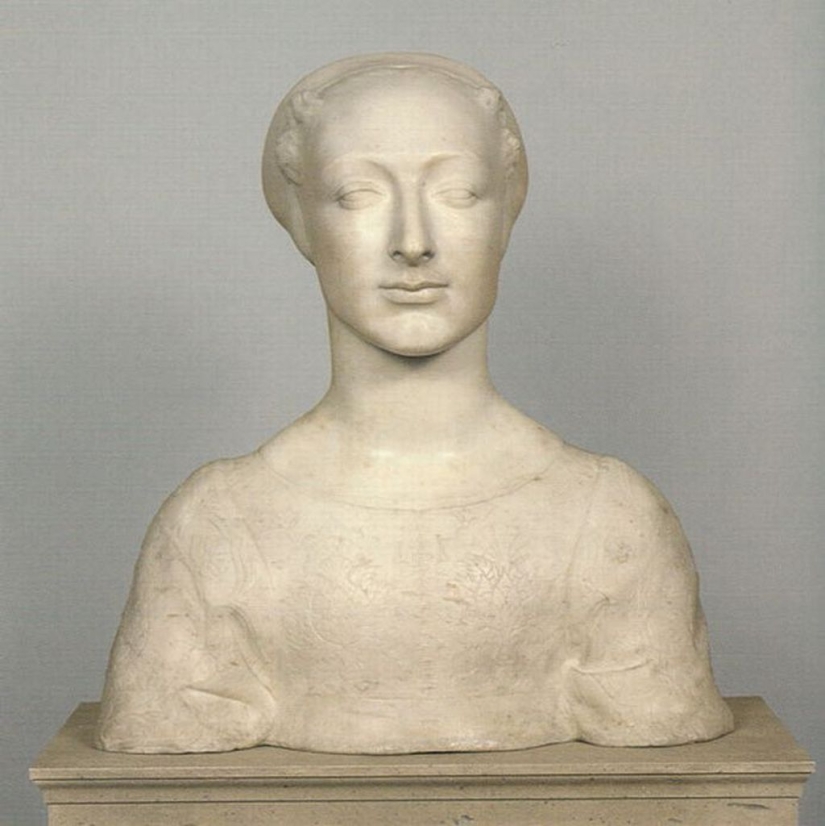
Andrea Verocchio. Portrait of a woman. Presumably, this is a portrait of Simonetta Vespucci
Most of Simonetta's portraits appeared after her death. Her early departure was also mourned by Sandro Botticelli, who painted Venus and Spring from her. Botticelli finished his most famous work, The Birth of Venus, 9 years after Simonetta's death. There are still disputes among art historians about which canvases the artist depicted Simonetta Vespucci on, and whether it is only her. Some suggest that from the moment of their meeting, the artist depicted Simonetta in the image of the Madonna or Venus on all the canvases for 15 years.
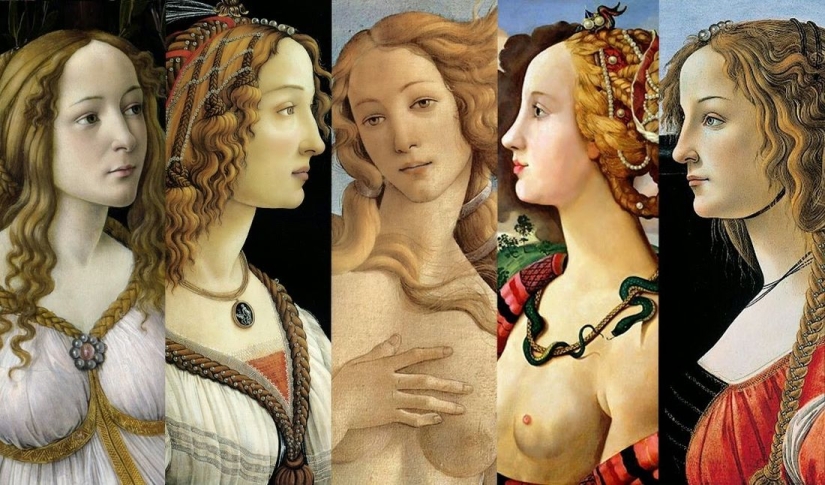
Simonetta Vespucci
With the death of Simonetta Vespucci and Giuliano de ' Medici, an entire era called the "golden age" ended in Florence, and the decline of the Florentine Renaissance began.
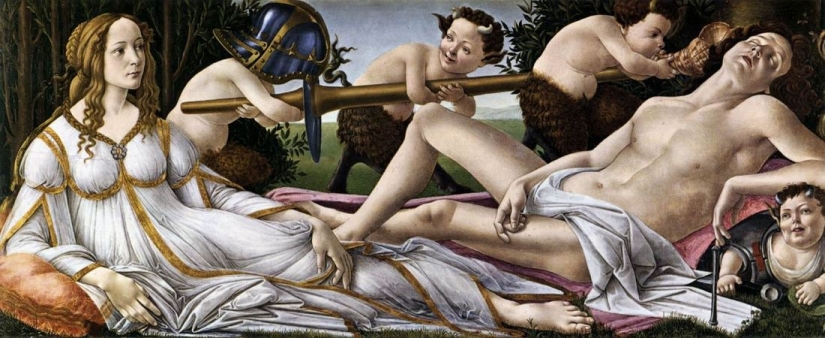
Sandro Botticelli. "Venus and Mars", 1483
Keywords: Culture | Paintings | Middle ages | Artist | Masterpiece
Post News ArticleRecent articles

Have you ever wondered how to create movies? It turns out that sometimes what happens behind the scenes, looks even more ...

Loving fathers are willing to go to great lengths for the sake of their dear daughters. To please their little princesses, these ...
Related articles

China is a country of striking contrasts where ancient traditions meet new technology and serene rural landscapes coexist with ...

By 2021, most of the grandchildren of the celebrities of the mid-20th century has already changed his fourth decade, so we can ...

The composer and cellist Mstislav Leopoldovich Rostropovich had a great sense of humor and loved good jokes. The musician always ...

Looking at this photo, you might think that it is a set for a movie about aliens. But this is not a dummy at all, but a real ...